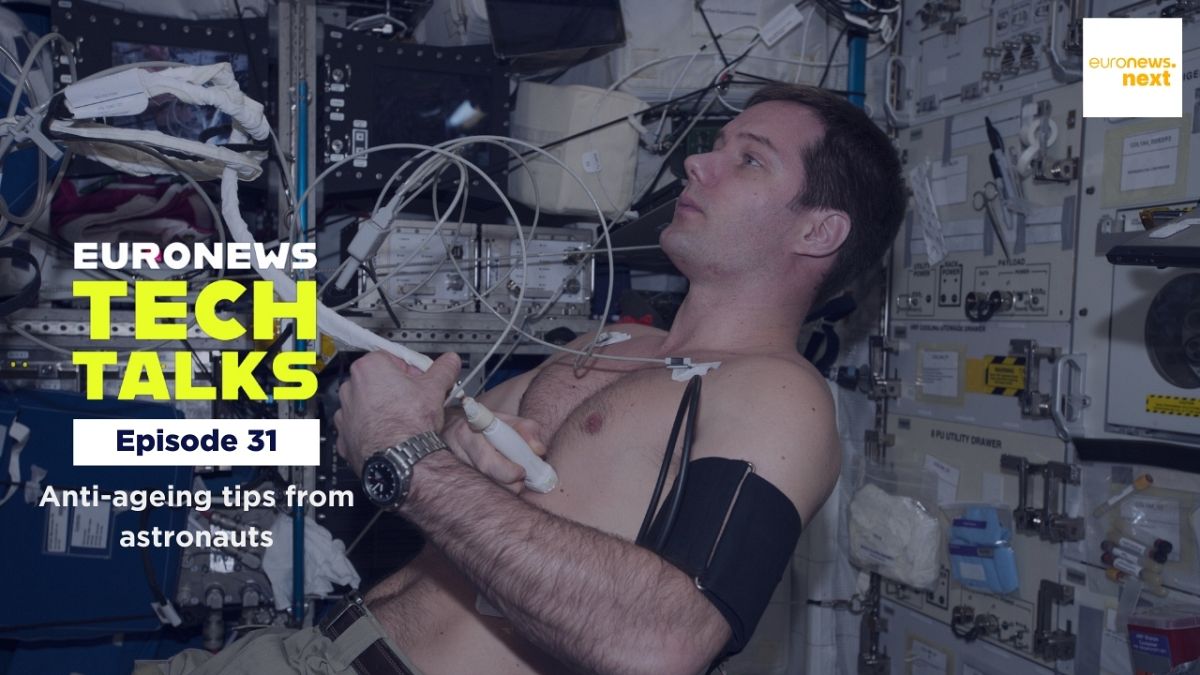Have you ever wondered what the most effective strategy is to stop accelerated ageing in astronauts and whether it could work on Earth? Tune into this episode of Euronews Tech Talks to find out.
Travelling to space has been found to alter different parts of the human body, so what’s the most effective strategy for combatting accelerated ageing in space?
Astronauts offer a model for studying this and can provide insights into how these processes work and how to counter them.
The secret to staying young in space and on Earth
NASA carried out a 2016 experiment with identical twins Scott and Mark Kelly to highlight some of these effects.
Scott spent nearly a year at the International Space Station (ISS), while Mark stayed on Earth, allowing scientists to compare their bodies. Before the mission, their telomeres, which protect the ends of chromosomes, were similar.
Surprisingly, Scott’s telomeres were longer than his brother’s during spaceflight. He joked about coming back younger, but upon his return, his telomeres shortened rapidly, leaving him with shorter telomeres than before.
In addition to these telomere changes, Scott also experienced muscle loss, bone density reduction, and vision problems – all symptoms linked to ageing on Earth.
Microgravity and radiation are two factors that contribute to accelerated ageing in space.
“Microgravity impacts our body because it’s designed to operate under Earth’s gravity,” says Christiane Hahn, a project scientist at the European Space Agency (ESA). “Without this constant stimulus, our physiology is deeply affected”.
Radiation is also damaging, she adds: “Our DNA is sensitive to radiation. If DNA changes, cell function changes, impacting our entire physiology”.
So how do astronauts counter these forces? Research shows that exercise is the only proven strategy.
In 2016, the ESA conducted a bedrest study to test whether vitamins, antioxidants, and supplements could prevent muscle and bone loss. They found that the cocktail didn’t help much.
Astronauts work out two hours a day to combat, for example, the 1–2 per cent monthly bone density loss in microgravity.
“It mimics ageing on Earth,” says Hahn. “After age 30, people lose about 3–8 per cent muscle mass each decade, and bone density declines after age 50”.
ESA’s Space Rider: the promise of drug discovery in microgravity
The European Space Agency is preparing to launch its first reusable space vehicle, the Space Rider, an autonomous lab that can stay in orbit for up to three months.
Set to revolutionise drug discovery in space, it will be Europe’s first lab of its kind, allowing companies to test experiments in microgravity.
It holds particular promise for orphan drugs, medicines for rare diseases, by significantly cutting costs related to development, manufacturing, and testing.
“The microgravity environment is ideal for developing potential cures and new medicines,” says an ESA representative.
“Space Rider accelerates the research cycle, allowing for faster testing and adjustments”.
Checkout latest world news below links :
World News || Latest News || U.S. News
The post Podcast | The best strategy to stay young based on astronaut research appeared first on WorldNewsEra.

